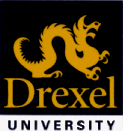
Dermatology Pathway (curriculum as of Class of 2026)
|
|
Dermatology Pathway (curriculum as of Class of 2026) |
REVIEW FOR PATHWAY 2025-2026:
To assist students interested in a career in dermatology with planning their fourth-year rotations and to better meet their educational needs and career goals, a discipline-based pathway in dermatology was developed. The pathway, or set of recommendations regarding the selection of rotations, should be front-loaded. The electives in dermatology should occur as early in the fourth year as possible in order to reconfirm the student's interest in dermatology and to acquire letters of recommendation from dermatology faculty at DUCOM and/or other institutions. The primary goal is to familiarize the student with the broad scope of dermatology training and practice to allow for a realistic career decision. In addition, it is expected that each student will learn to diagnose and treat a wide variety of common dermatologic disorders.
In general, this pathway contains a minimum of required electives since only the dermatology elective is necessary to attain the primary goals. The student should have wide discretion in filling out the remainder of his/her schedule in many areas of medicine.
Sites and
Personnel
Pathway Director
Erum Ilyas, M.D, M.B.E, F.A.A.D
ek36@drexel.edu
Student Coordinator
Marie Hartman
215-991-8503 Phone
215-843-7738
mh37@drexel.edu
Required Courses
Emergency Medicine Subinternship
Emergency Medicine Subinternship is required by the University as a senior year
course. During this course we would expect that the student will learn the principles of rapid assessment and stabilization of critically ill and injured patients; learn the initial evaluation and management of the wide range of undifferentiated patient complaints in the Emergency Department; gain skills, specialized examination technique and real-time interpretation of diagnostic studies; participate in common and more advanced procedures.
Required Subinternship Objectives: Dermatology Pathway students must complete the required Medicine Subinternship.
By the end of the rotation learners will be able to:
Students in the dermatology pathway will be required to take one rotation in Dermatology (see details below).
The Goals and Objectives of the Dermatology rotation are as follows:
During the fourth year all students, regardless of pathway, will be required to meet certain medical school requirements as outlined in the Student Handbook.
B. Strongly Recommended Courses
Strongly Recommended: Dermatology - 1- 3 additional Dermatology Away rotations. At least two Away Dermatology rotations are strongly recommended for Dermatology applicants.
Dermatology electives in a University setting:
At least two Dermatology electives in a University setting are strongly recommended for Dermatology applicants. This will expose the student to new areas of subspecialty
interest and additional faculty members at another university. The
option of taking a home based rotation in a community based
dermatology office (i.e., Reading Hospital) may also be chosen
if an exposure to a non-university setting is desired.
The student may choose free electives based on schedule availability and according to his/her interests.
Required Dermatology Rotation
During the four-week elective, the student will be exposed
to a wide variety of common dermatologic disorders. These exposures
will occur both during patient sessions and through a clinical series
of didactic sessions. At a minimum, it is expected
that each student will learn to diagnose and treat the following
dermatologic disorders:
Recommended
Reading:
Principles of Dermatology by Lookingbill and Marks. The
reading corresponds to the lecture series. Copies of this text are
available in the medical
school library and the bookstore.
Week 1: Chapters 2 and 4
Week 2: Chapters 9 and 10
Week 3: Chapter 13
Week 4: Chapters 6, 7, and 8
Evaluation of the Student
The student's performance in each rotation will be evaluated by supervising physicians, and residents when appropriate, using the standard Drexel University College of Medicine clinical evaluation form. Students not receiving a grade of satisfactory or higher will be counseled and provided with remediation.
Evaluation of 4th year Courses
Upon completion of each rotation, students are encouraged to complete the end-of-rotation evaluation form in DOCSS. Students have the opportunity to provide feedback on the rotation as well as on specific faculty (and residents) with whom they worked in DOCSS. All feedback is de-identified.
Evaluation of the Pathway
Students are encouraged to complete an end-of-year Pathway evaluation for the Pathway. The feedback from this evaluation will help in advising future students more effectively.